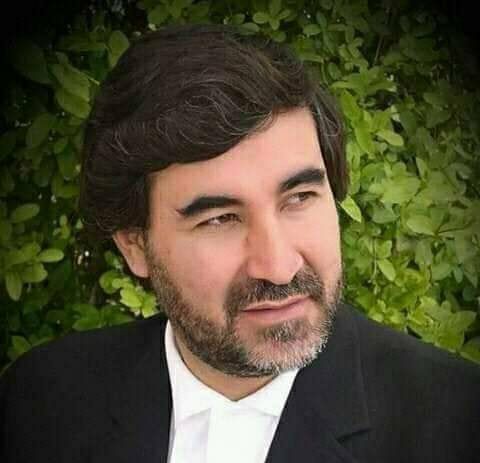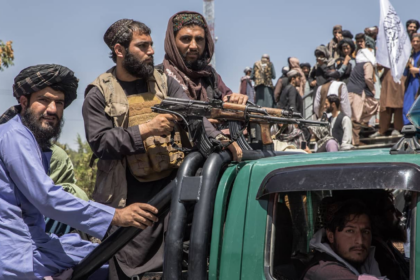RASC News Agency: The targeted assassinations of the leaders of Jihad and senior members of the National Resistance Front of Afghanistan began with a complex terrorist attack on the national hero of the country, Ahmad Shah Massoud, by the intelligence circles of the region in cooperation with their paid individuals in Afghanistan. The rulers of the past twenty years in Afghanistan initiated the project of targeted assassinations to eliminate influential figures affiliated with the National Resistance Front of Afghanistan and remove them from the political scene.
Sayed Mustafa Kazemi secured a seat in the country’s parliament as a representative of the people of Kabul in the first round of the Afghanistan parliamentary elections. During his short time in parliament, he became one of the prominent representatives of Afghanistan, assuming the chairmanship of the Economic Committee of the House of Representatives as well as the leadership of the first parliamentary group known as the Independence Group. Mr. Kazemi actively participated in the formation of the National Front of Afghanistan, led by Professor Burhanuddin Rabbani, Ahmad Shah Massoud, Marshal Mohammad Fahim Qasim, Amir Ismail Khan, Yunus Qanuni, Marshal Abdul Rashid Dostum, Syed Mansoor Naderi, Mohammad Akbari, and other influential individuals of the Jihadist parties, with Mr. Kazemi as the spokesperson for this front.
On Wednesday, November 6th, 2007, Mr. Kazemi, along with six members of parliament and eighty other individuals, including parliamentarians, fell martyr in a pre-planned terrorist attack in the sugar factory of Pol-e Khomri, the capital of Baghlan province, when they visited the area. More than a hundred others were injured in this terrorist incident.
Political experts consider the targeted assassinations of the leaders of the Islamic Society of Afghanistan and members of the National Resistance Front as a long-term strategic and regional project to achieve long-term objectives in the country. They have stated that the continuation of the same project of targeted assassinations of non-Pashton leaders, symbolically establishing a government, fraudulent elections, deceptive slogans of counterterrorism and the reconstruction of Afghanistan, are all deceptive tactics aimed at achieving long-term growth and development of terrorism in the north and the absolute dominance of ethnic elements. This project is currently being implemented by the Taliban group.
Military experts attribute the planned attack on the assassination of Sayed Mustafa Kazemi in Baghlan to the actions of the government and intelligence circles at that time, led by Hamed Karzai. They have mentioned that certain groups within the Afghanistan government at that time, under the leadership of Hamed Karzai, were involved in the chain of these terrorist assassinations. According to them, the personal, political, and military evidence of the attack on the life of Sayed Mustafa Kazemi indicates the political nature of his assassination. They have presented the following evidence: the new acting governor of Baghlan, Mohammad Alam Ishaqzai, a major supporter and follower of President Karzai, like the first provincial governor who was in charge of all security matters and should have been present in this meeting as the host and companion of this delegation, was notably absent and missing during this incident.
On the other hand, according to them, the suicide attack on Sayed Mustafa Kazemi occurred when Hamed Karzai announced his readiness to negotiate with the Taliban and Gulbuddin Hekmatyar’s Islamic Party. This party was known as a strong opponent of the National Resistance Front of Afghanistan, a militant opposition group. Shortly after that, a new political movement emerged called the “United National Front,” which included a wide range of Afghanistani jihadi parties. The formation of this significant political movement provoked a strong reaction from the President, leading Mr. Karzai to establish a crisis committee.
In another aspect, political observers dismissed Hamid Karzai’s government’s claims about the bloody attack on Sayed Mustafa Kazemi, which they referred to as a suicide attack. They argued that the power and extensive scope of the explosion indicated the use of a powerful bomb in the vicinity of Mr. Kazemi. A suicide vest does not possess such destructive power. On the contrary, some witnesses of the attack reported, “something being thrown from above a tree onto the place where he was present.”
Safiya Sadeqi, who was a member of this parliamentary committee led by Mr. Kazemi, had stated after the incident that she “had heard the sound of a rocket before the explosion.” Furthermore, the late Professor Burhanuddin Rabbani, who himself was a victim of these targeted assassinations, had commented on the killing of Sayed Mustafa Kazemi: “After the explosion, bodyguards of the representatives were targeted with bullets. It is also said that Kazemi was still alive after the explosion and was martyred by a gunshot.”
On the other hand, political experts and analysts have argued that the systematic pattern of targeted assassinations and massacres of leaders from the Islamic Society and members of the National Resistance Front during the governments of Karzai and Ahmadzai were part of a joint intelligence project with Pakistan. The victims of these targeted projects were individuals who either possessed power and security competence or had the ability to form popular cohesion, which ran contrary to the interests of Karzai’s government circles and the intentions of Pakistan’s Inter-Services Intelligence (ISI) organization. They also mentioned the assassinations of Professor Burhanuddin Rabbani, General Dawood Dawood, Shah Jahan Noori, and Abdul Rahman Sayed Khili, prominent leaders of the Islamic Society Party of Afghanistan. They argued that the Karzai and Ahmadzai governments, through the implementation of this joint intelligence project with Pakistan, pursued goals of shifting the war from the south to the north of Afghanistan due to changes in the demographic composition of these provinces. To achieve these pre-planned objectives, they systematically eliminated those who were perceived as obstacles to achieving these national goals through targeted assassinations.






